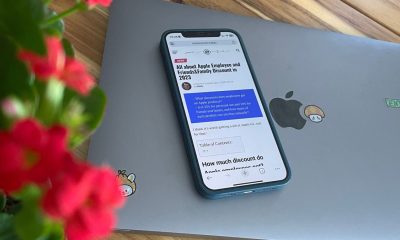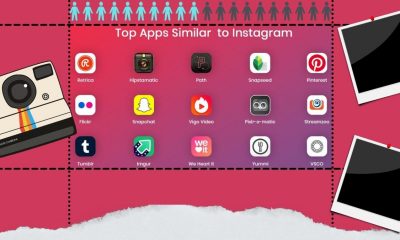News
ADA Website Compliance for Hotels
Websites that are not accessible to people with disabilities have generated a record number of lawsuits under the Americans with Disabilities Act (ADA). Recent lawsuits have been filed against numerous hotels such as Hilton, Marriott, and Choice Hotels.
ADA-related lawsuits are becoming increasingly opportunistic in nature, driven in part by a lack of clear legal requirements. Last year, the Department of Justice formally announced it was not going to issue its proposed rule on web accessibility.
Without clear legal requirements in place, uncertainty abounds. Not least among hotels. Many hoteliers feel confused about how to ensure their websites are ADA compliant, and concerned about how to deal with any related lawsuits.
So how do you make sure that your hotel website is ADA compliant? And how can you reduce the risk of being hit with a potentially costly lawsuit? Listen to our recent webinar and read on to find out more.
Are hotels legally required to have ADA-compliant websites?
There aren’t any laws that require a website to be ADA compliant. However, all hotel websites (including those in the US, Canada, EU, and Australia) must meet the Web Content Accessibility Guidelines, produced by the World Wide Web Consortium (W3C).
Those that don’t meet these guidelines risk compliance lawsuits, particularly in the US where the Americans with Disabilities Act is concerned.
The World Wide Web Consortium guidelines are split into three levels — “A”, “AA” and “AAA”. The level relevant to hotels (“AA”) has four distinct principles:
- Perceivable: The website can’t be invisible to a user’s senses. This means a website needs to provide text alternatives to non-text content (i.e., large text, braille, sign language) and offer alternatives to time-based media.
- Operable: The website must be compatible with a user’s browsing method. Examples include making sure that your website can be operated with a keyboard, allowing users to pause and read certain sections (such as for moving or scrolling content). Pages must also be clearly labeled so that users can keep track of where they are within a website.
- Understandable: Language and function are vital in web accessibility. This means that content should be clear and limit confusion or ambiguity.
- Robust: For web accessibility, this means a range of web technologies (including old and new user agents and assistive technologies) can access the content.
The original Web Content Accessibility Guidelines (WCAG 2.0) were updated in June 2018 to WCAG 2.1. This update was intended to accommodate a wider range of people with various disabilities, and also covers changes in technology.
In light of this update, let’s explore some specific steps hotels must take to ensure that their websites achieve compliance.
How can hotels achieve compliance?
A hotel website can achieve compliance through both its technical components and its content:
ADA-compliant content
Accessibility information should be on every web page a person might visit. The example below perfectly illustrates how accessibility information should be laid out on a hotel’s Rooms page.

The headline: “Accessible Deluxe King Roll In Shower” lets the user know that this room is accessible, and it points out the shower feature (many hotel brands now break a room down by both the type of room and the shower feature). The ‘Room Features’ section also lists the room’s physical features, including those related to accessibility.
All told, a disabled guest who visits this page has all the necessary information he or she might need to assess if this room is suitable.
Make accessibility information visible throughout your website
The above example demonstrates best practice for a single web page. But accessibility information needs to be featured throughout a website.
As an example, imagine a disabled traveler named Mary is looking for a hotel room in New York City. Mary wants to make sure that she can arrive, checkin, reach her room, get into her room, use the restroom, bath, and shower, and sleep without an issue. She also wants to know about which common areas are accessible.
For a disabled guest like Mary, a hotel website needs to provide comprehensive information about the entire on-property experience before she arrives. It needs to describe each area as well as the the journey to and from each area — including potential obstacles along the way, and any areas that are inaccessible.
These areas might include:
- Hotel entrances
- Registration desk
- Elevators
- Common places
- Parking facilities
- Emergency exits and exit plan
Also, it’s important for hotels to point out that they allow service animals, even if they’re not pet-friendly.
How else can your website achieve ADA compliance?
Based on our previous post on this topic, we’ve outlined additional ways to make your website content ADA compliant:
All visual media has a text-based analog: Images should have “alt” text describing their content. Videos should also be connected to appropriately descriptive text. This allows screen reader software to properly describe the image on the website.
Documents are available in HTML text-based formats: Documents should not be posted as either images or PDFs. This is because a screen reader won’t be able to translate this for the blind.
Text has minimal formatting: Those who have difficulty seeing may be unable to read particularly small text or colored text on colored backgrounds. It’s best to stick to a large, common font, with black text on white.
Audio signals are displayed visually: If there is an important audio signal (such as an error sound), it should also be represented visually to alert those who are deaf or hard of hearing.
Technical aspects of accessibility
As mentioned, an ADA-compliant website also needs to meet certain technical criteria. Guests with visual or audio impairments use assistive tools and technologies to help navigate websites, so the code on your website and booking engine must support these tools.
These technical requirements include:
- Screen readers
- Keyboard navigation
- Color contrast/high-contrast modes
- Browser zoom
- Closed captions on video content
Various web accessibility evaluation tools can check your code and alert you to any technical accessibility issues.
Audits and monitoring: best practices
We also recommend carrying out a regular ADA compliance audit for your hotel website. This needs to be done as a collaborative effort between an ADA compliance vendor and website vendor.
An ADA compliance vendor will:
- Audit your website for initial and ongoing technical compliance
- Provide audit results to your hotel property and website vendor
- Archive audit reports with timestamps
A website vendor will:
- Complete tasks related to non-compliance and violations uncovered in ADA compliance audits
- Archive worklog with timestamps
The graphic below shows a step-by-step process for what an initial ADA compliance audit process looks like.

At the bare minimum, you should carry out a quarterly website compliance audit. But if possible, real-time monitoring is ideal.
Tips for identifying compliance issues

To really identify whether or not your hotel meets compliance, put yourself in the shoes of a disabled guest. Literally.
Travel around your hotel in a wheelchair to see if every room is wheelchair accessible. Or blindfold yourself (we suggest having someone accompany you) to get an idea of how a visually impaired person might navigate around your property.
Notice any problems? You might not be able to fix them all at once, but you can update your website so a disabled guest knows exactly what issues they might encounter during their stay.
To apply the same level of scrutiny to your hotel website, think like a plaintiff’s attorney. Look for every possible compliance fault they might look for. Can your website be navigated by keyboard all the way through the booking process? Are the color contrast ratios of your content adequate for the visually impaired? Be rigorous in your testing.
If a guest has openly let you know that they have a disability, ask them for feedback about your website and on-property experience. Was there something that surprised them when they arrived? How could you improve things for next time?
Finally, we suggest you retain a legal counsel with ADA and website expertise. A connection who is up to speed with technology and ADA compliance can be an invaluable asset.
Mitigating risk
While you may not legally require an ADA-compliant website, ADA compliance is beneficial to your guests and to your own profitability.
An ADA-compliant atmosphere means that you can better serve your guests and insure your hotel against future regulatory and legal issues. In addition, a website that’s easier to book means that disabled guests won’t need to find alternate avenues to book at your hotel, or potentially book with another hotel instead.
Even if you aren’t required to have an ADA-compliant website, you are required to have an ADA-compliant method of communication. A website is one of the easiest ways to communicate with disabled guests, as opposed to specialized toll-free services and Text Telephone (TTY).
Of course, the simplest reason for having an ADA-compliant website is that it’s the right thing to do. Plus, it’s not expensive or difficult. Achieving ADA compliance really means simply adhering to a set of web standards, which are not costly to implement.
Original post here https://www.pegs.com/blog/how-to-ensure-your-hotel-website-is-ada-compliant/
-

 Marketing Tips2 days ago
Marketing Tips2 days agoWhat is my Instagram URL? How to Find & Copy Address [Guide on Desktop or Mobile]
-

 Business Imprint3 days ago
Business Imprint3 days agoAbout Apple Employee and Friends&Family Discount in 2024
-

 App Development3 days ago
App Development3 days agoHow to Unlist your Phone Number from GetContact
-

 News4 days ago
News4 days agoOpen-Source GPT-3/4 LLM Alternatives to Try in 2024
-

 Crawling and Scraping4 days ago
Crawling and Scraping4 days agoComparison of Open Source Web Crawlers for Data Mining and Web Scraping: Pros&Cons
-

 Grow Your Business2 days ago
Grow Your Business2 days agoBest Instagram-like Apps and their Features
-

 Grow Your Business4 days ago
Grow Your Business4 days agoHow to Become a Prompt Engineer in 2024
-
Marketing Tips2 days ago
B2B Instagram Statistics in 2024



